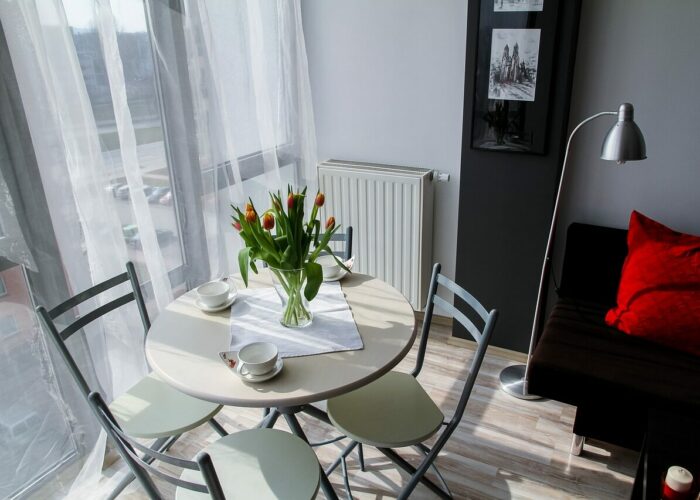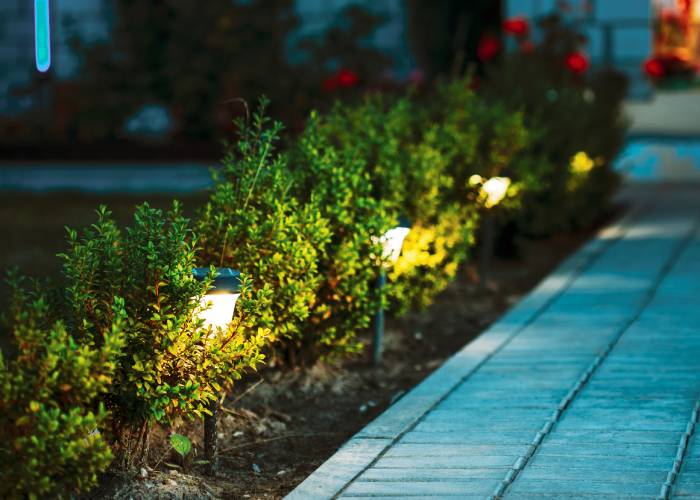Our home is our safe space, where we relax and spend time with family. It’s an oasis where we can shut out the outside world and enjoy life without prying eyes. However, you can’t take it for granted that your home is private if you haven’t taken any measures to enhance privacy and security.
A lot of mistakes are made regarding the privacy of the home and garden. Every mistake can leave you and your loved ones vulnerable and not even realize it. It’s helpful to understand people’s common mistakes so you can avoid making them, too. In this article, we will go over several to avoid so you can feel as comfortable as possible in your home and garden.

1. Not modifying windows
When it comes to maintaining privacy at home, overlooking window modifications is a common mistake. Windows offer a view out, but also leave room for visibility into the home. While blinds and curtains are common solutions, they aren’t the only options. Technologies such as smart glass present a modern alternative, enabling windows to switch from transparent to opaque with simple control, enhancing privacy without permanent alterations or loss of light.
Emerging challenges like drone surveillance can outstrip traditional privacy solutions. Anti-surveillance window films are designed to counteract this by obstructing specific light waves and infrared signals, making it harder for electronic surveillance to capture the home’s interior.
Window roller shutters are another underutilized option. They provide privacy, deter intruders by serving as a physical barrier, and offer the added benefit of insulation, helping to regulate indoor temperatures and reduce outdoor noise.
Homeowners should be aware of these options as part of a comprehensive approach to privacy, considering their effectiveness, convenience, and the level of protection needed for their home.

2. Not using landscaping
Many homeowners overlook landscaping’s potential as a privacy shield. The absence of a well-thought-out landscape design can leave your home uncomfortably exposed. Strategic planting of tall trees can form a natural screen, blocking the view from the outside, while thorny bushes under windows can deter intruders.
Implement a layered planting strategy: tall trees provide a high screen, shrubs fill in the middle space for additional cover, and ground cover plants ensure full privacy at eye level. This approach enhances seclusion and contributes to your garden’s aesthetic appeal.
Remember, the key to effective privacy landscaping is in the details: choose plants that maintain foliage year-round, understand the growth patterns to avoid future gaps, and keep up with regular trimming. By sidestepping the common oversight of not using landscaping, you can turn your property into a private sanctuary without compromising on design.
-
Neglecting Yard Privacy
A common privacy oversight is an exposed yard, which turns your private moments into a public spectacle. Creating an outdoor space that allows you to unwind without the uneasy feeling of being watched is crucial.
Designing for privacy means strategically placing patios and decks where they are shielded from outside views, perhaps by the natural contour of your land or by structures within the garden. When the layout of your land does not naturally lend itself to secluded areas, privacy screens or outdoor drapery can be invaluable. These elements can be both functional and decorative, adding to the ambience while keeping your leisure activities concealed.
Incorporate structures like pergolas and gazebos, which enhance the charm of your garden and offer retreats. They can be enclosed with outdoor fabrics or entwined with climbing plants; they become intimate nooks for dining or relaxation, away from the outside world.
To maximize privacy, consider zoning your yard. Create distinct areas for various activities; each bordered with plantings or level changes to prevent sightlines from traversing the entire garden. These zones can establish private “outdoor rooms,” whether it’s a quiet reading corner, a hidden sunbathing spot, or a secluded area for family gatherings.
Remember, the goal is to maintain a balance between open space and private areas, ensuring that your outdoor living space feels both welcoming and intimately yours.

-
Overlooking the Security of Entry Points
Ignoring the security of your home’s entry points is a critical error that compromises both your privacy and safety. Entry points are not just doorways but potential vulnerabilities that must be fortified.
High fences and secure gates serve as the first line of defence. They should be robust and complemented with quality locks that resist tampering. Incorporate smart lock systems that offer both convenience and enhanced security through customized access codes or biometric authentication.
Surveillance cameras positioned at gates and doors act as both a deterrent and a means to monitor activity. These increasingly intelligent devices offer features like motion detection, night vision, and remote access via smartphones.
Lighting plays a pivotal role in securing your property’s perimeter. Motion-activated lights are particularly effective as they draw attention to movement, discouraging would-be intruders. Ensure that all entry points are well-lit, eliminating dark corners where someone could lurk undetected.
In securing entry points, consider a layered approach—physical barriers, electronic surveillance, and lighting—all working in concert to protect your privacy and provide peace of mind.
-
Neglecting Digital Privacy: The Invisible Intrusion
Digital exposure can be as compromising as a physical breach in the modern home. Overlooking the digital aspect of privacy is akin to leaving your front door wide open. It’s vital to secure the virtual gateways that could lead into your personal life.
Your Wi-Fi network is the backbone of your home’s digital realm. It can be an open invitation to cyber intruders without proper security measures. Use strong, unique passwords and consider advanced encryption standards, like WPA3, to protect your network. Regularly update your router’s firmware to guard against the latest vulnerabilities.
Smart home devices—from thermostats to voice assistants—can significantly enhance convenience but also pose privacy risks. Secure these devices with strong passwords and two-factor authentication, and ensure they are always running the latest software to mitigate hacking risks.
Beyond hardware, be conscious of the personal information shared on social media. Each post, check-in, or shared detail can inadvertently map out a pattern of life that’s available to anyone. Adjust privacy settings to control who can see your information and be judicious about what you share.
Remember, digital eavesdropping doesn’t require a physical presence; it can be done from anywhere in the world. By securing your digital environment, you create an invisible but impermeable layer of privacy that shields your personal life from external scrutiny.
Conclusion
The goal of adding privacy to your home is not just about blocking the outside world. It’s to create a sanctuary where you can feel completely comfortable. If you avoid the mistakes we listed in this article, you should be able to achieve this.




